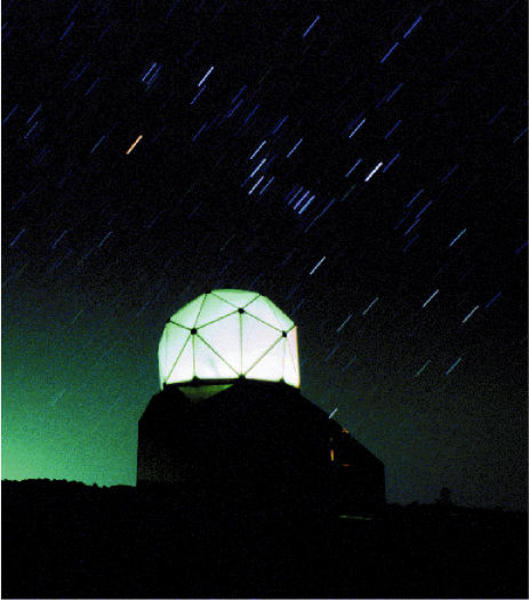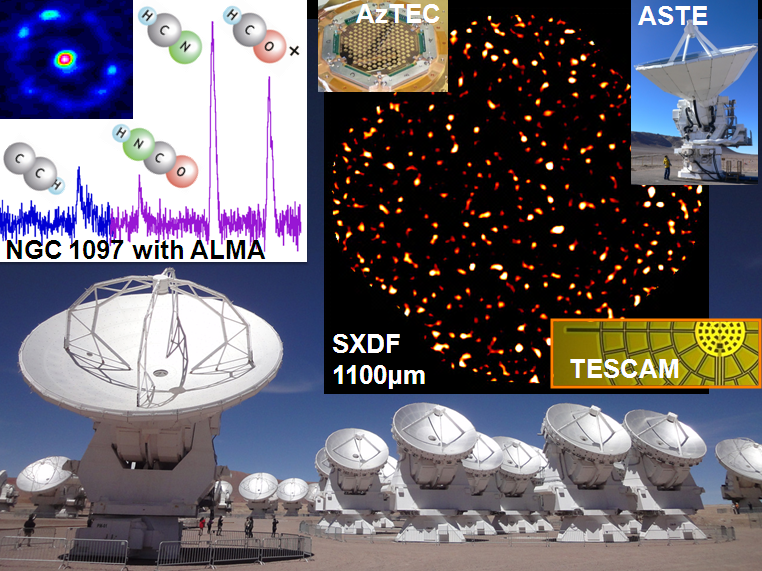
Submillimeter waves are located in waveband between radio and far-infrared. In this project, we are investigating star and planet formation in nearby molecular clouds as well as the formation and evolution of galaxies by using various radio telescopes such as the ASTE 10 m telescope. In addition, we are conducting extensive observational studies with ALMA (Atacama Large Millimeter/submillimeter Array).
Exploring Chemical Evolution from Star Forming Cores to Protoplanetary Disks
Our group operated the Mount Fuji Submillimeter-wave Telescope from 1998 to 2005, and studied the formation of molecular cloud cores by observing the atomic carbon lines. As the next step, we now concentrate on star and planet formation in molecular cloud cores. Chemical evolution during star and planet formation is being unveiled through molecular line observation covering a wide frequency range from millimeter to THz-waves. For this purpose, the superconducting hot electron bolometer mixer is being developed for heterodyne detection of spectral lines of fundamental atoms and molecules in the THz regions. In addition, we are also studying chemical evolution from star forming cores to protoplanetary disks with ALMA. A thorough understanding of such chemical evolution will be of particular importance for exploring the origin of the Solar System.
Exploring Formation and Evolution of Massive Galaxies and Super Massive Black Holes
We aim to understand the formation and evolution of massive galaxies and supermassive black holes from the early Universe to the present day, by unveiling dust-enshrouded starburst galaxies (i.e., submillimeter galaxies) based on the wide-area deep continuum surveys at millimeter to submillimeter wavelengths, by estimating the redshift distribution of the dusty starburst galaxies, and by diagnosing these energy sources. We conducted wide-area deep 1100 μm surveys using the AzTEC camera on ASTE. Based on the derived large galaxy catalogue, extensive follow-up studies have been conducted using various telescopes, including Subaru, astronomical satellites from infrared to X-ray, and ALMA. Developments of the multi-color camera TESCAM, using superconducting devices (transition-edge sensors) and wide-band spectroscopy systems are in progress. Our aims are to establish the diagnostic method and to explore the evolution of galaxies throughout the history of the Universe by observations.





